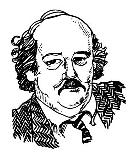(Syndicates to Kansas newspapers Feb. 1, 2016)
 Several bills introduced so far this session would limit the length of the legislative session, generally to 90 days one year and 60 days the next.
Several bills introduced so far this session would limit the length of the legislative session, generally to 90 days one year and 60 days the next.
They sound great on the heels of a record 113-day session last year that left legislators frustrated and the public wondering why it took their elected legislators so long to do the state’s business and go back to their home districts.
This is, after all, a part-time Legislature and members sacrifice time with their families or working on their businesses or, well, probably planting flowers in their yards to do good things for their constituents and often the entire state.
Oh, and there are those who just like the Legislature, like strolling the halls and debating and hitting up lobbyists for lunch and dinner.
But insiders also know while a limit on the length of the session sounds good to many Kansans…there’s a bit of a downside, too.
Remember, it’s politics that they do here at the Statehouse, and the key to successful politics is being able to corner your opponent. Often it can be done just with a majority of the vote. Or a provision in a bill that you know a member needs—or would love to get approved—to take back to constituents as an example of their correct choice in electing that representative or senator.
While a 90-day session one year and a 60-day session another year sounds like ample time to accomplish the work of the state, this is the Statehouse, and it’s only the last couple days that really count.
Whether it is day 60 or 90, there are things like the budget that have to be passed before legislators can go home. No matter how productive the start or middle of the session, the political keys are worked out in the final day or two, and no matter what it’s number, those final few days represent a tool for legislative leaders.
Oh, it is a little short of, say, “stop or I’ll shoot,” but a hard deadline for adjournment means that canny scheduling—and those folks are canny when it comes to looking for political leverage—might just be another tool to push bills into law, or at least down to the second floor where the governor sits.
Wonder why last year took 113 days to wrap up the session? It was because, for good or ill, it took that long for the leadership of the Legislature to get the budget and the tax increases necessary to fund it where they wanted. Just how much spending could be cut, and once that figure was settled, how to raise the money to pay for it.
It was just that simple. If the state budget had been bulging it wouldn’t have taken that long. Lawmakers would have just passed a budget and gone home to enjoy the summer.
Now, that’s a pretty raw-boned way to look at what can happen with a hard lid on the length of the session. Count on any hard limit, whether on days or when lawmakers stop receiving legislative pay, to be a tool for the leaders. There will undoubtedly be a way to extend the session by probably a two-thirds vote in each chamber—which at this political point, leaders probably can summon up or not, depending on what works out best for them and their legislative agenda.
So while a cap on the length of the session sounds nice, it’s not the end of the story or the politicking.
Oh, and remember, that legislators can’t take campaign contributions from political action committees, unions and such, until final sine die adjournment of the Legislature. Which might be as much reason for lawmakers to complete their work quickly, at least in election years.
